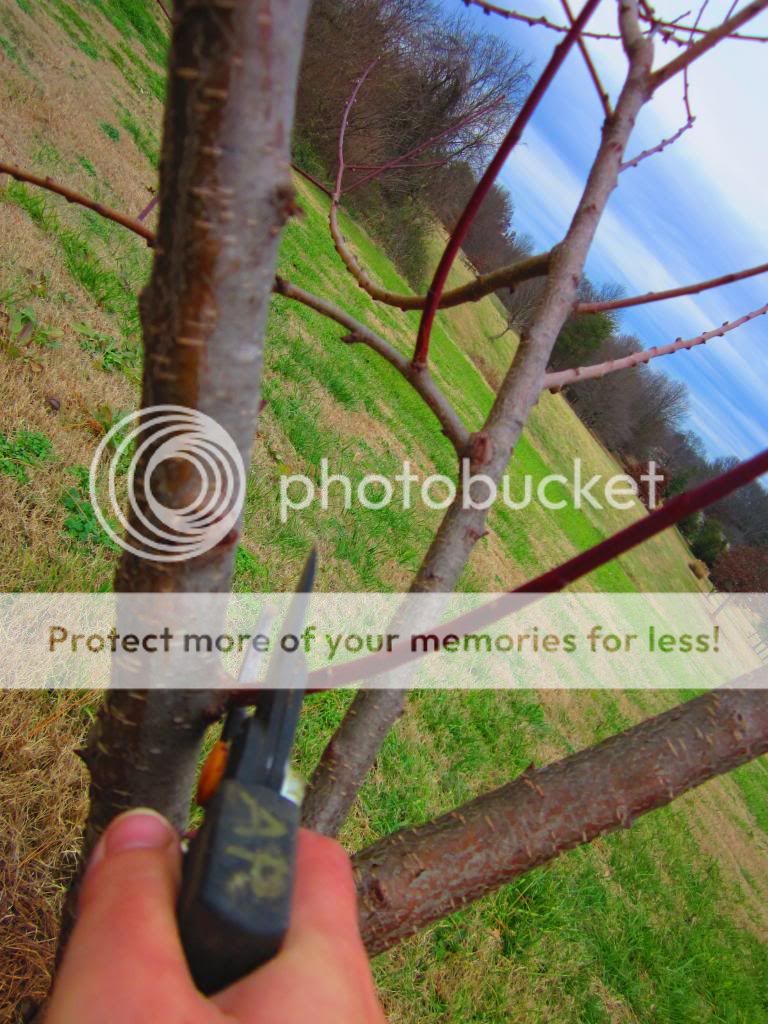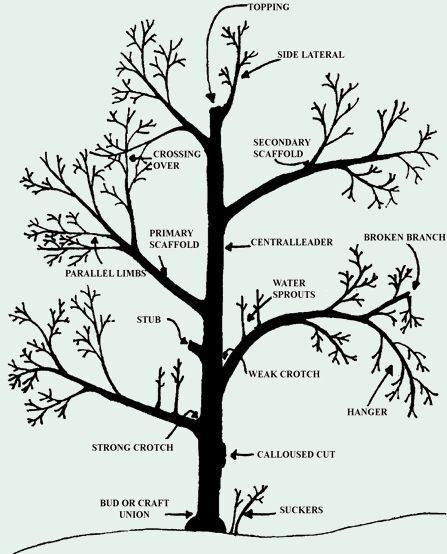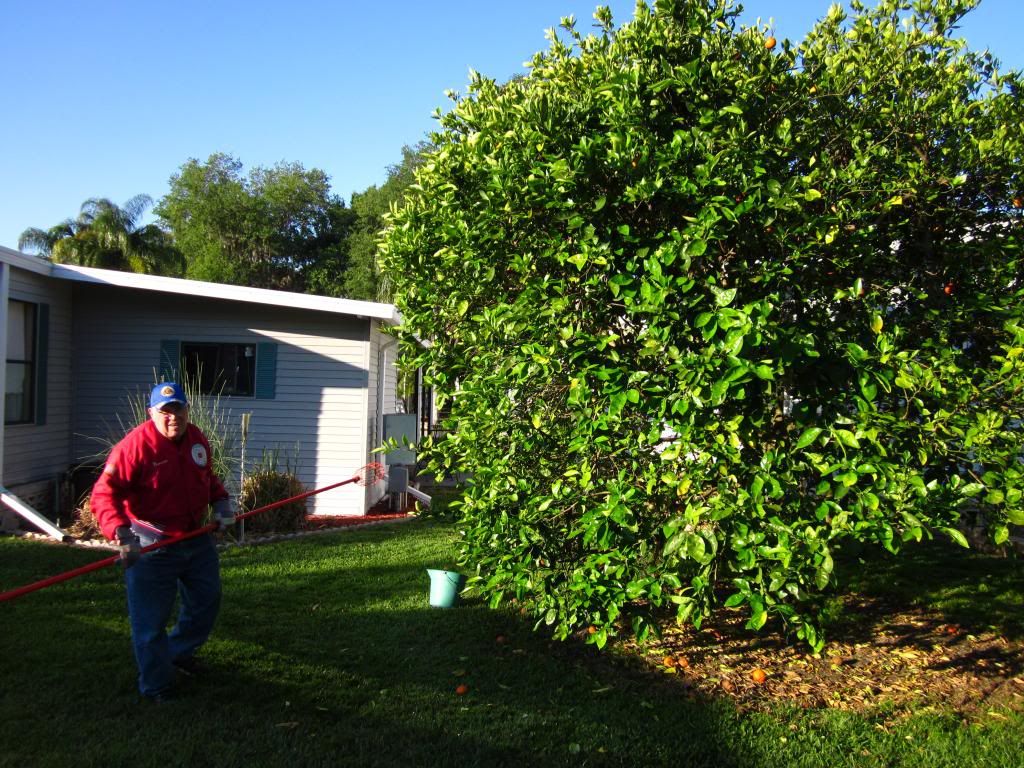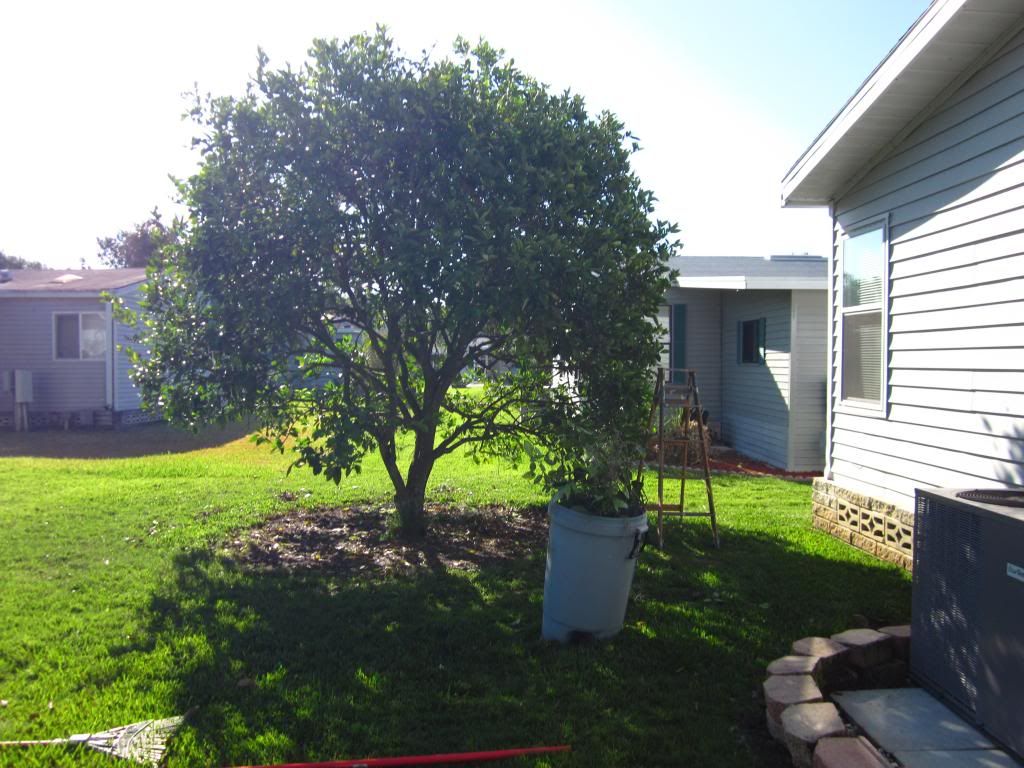Pruning trees is a must for good aesthetics and tree health. Clearing some space in the canopy helps
increase air circulation, which can be good for decreasing some pest, disease, and fungal problems. Cutting out crossing limbs can cut down on damage caused by rubbing branches. It's easier to see the form of a well pruned tree, which makes it much more attractive than a big blob of green foliage.
Although some trees prefer to be pruned in the spring or summer, most should be pruned in cooler fall or winter months. In Knoxville it's about time to wrap up last minute pruning in preparation for spring weather. Cooler zones further north may have a bit more time to prune. Tree health aside, one major benefit of pruning trees in the dormant season is that there's less foliage in the way. To quote Dr. Susan Hamilton of the UT Gardens, it's easier to see the "bones" of the tree if you prune in the winter.
Below are a few best practices I follow for tree pruning. This is a far cry from a comprehensive guide, and if you want to learn more there are several good guides available.
Cut it out:
 |
| Pruning a peach tree this February. |
Although some trees prefer to be pruned in the spring or summer, most should be pruned in cooler fall or winter months. In Knoxville it's about time to wrap up last minute pruning in preparation for spring weather. Cooler zones further north may have a bit more time to prune. Tree health aside, one major benefit of pruning trees in the dormant season is that there's less foliage in the way. To quote Dr. Susan Hamilton of the UT Gardens, it's easier to see the "bones" of the tree if you prune in the winter.
Below are a few best practices I follow for tree pruning. This is a far cry from a comprehensive guide, and if you want to learn more there are several good guides available.
Cut it out:
- Dead / broken limbs: These branches are goners. There's no point in leaving them in, so take 'em out. If you think the limb could have possibly died from a pest or disease problem consider cutting at
least 6 inches below the start of limb death to root out the problem.
Image courtesy of www.wintergreenhouse.com - Suckers: This means any growth from the base and the trunk. Suckering is especially prevalent with grafted trees, which makes it a common occurrence in the landscape. Aesthetically, suckers are distracting. Horticulturally, suckers may be sprouting from the rootstock instead of the desired graft.
- Water sprouts: I.E. vertical branches. Water sprouts are weak growth and should be removed earlier rather than later. The bigger they get, the more they rip.
- Crossing limbs: These limbs will rub against each other and damage the bark making the tree more susceptible to pest and disease problems. In addition to removing limbs that are currently intersecting, go ahead and cut out the ones that will cross in the future. Follow the growth of a branch. If it continues growing in the same direction, where will it end up? If the branch is growing toward the center of the tree instead of out, it's pretty well guaranteed to cross sometime in the future.
- Hangers: In many cases, if a limb is droopy it may become weak and break. Keep an eye out for hanging limbs and remove them if you think they'll become a problem.
A few more Tree Tips:
- Trees should be pruned regularly -- about once a year. Annually going through and chopping out problem branches while they're small is healthier for the tree and easier work than waiting until the problem branches are large and heavy.

It's a good idea to sterilize pruners with
hydrogen peroxide between plants or diseased limbs. - Cuts should be made at an angle. That is, the stub shouldn't be flat upwards like a table. An angled cut will drain water, a flat cut will pool water and develop health problems.
- Use a bypass pruner. Bypass pruners will make a clean, healthy cut. Anvil pruners kind of squish the limb before cutting.
- If the branch is too large for a set of bypass hand pruners, step up to loppers. If the branch is too large for loppers, use a hand saw. If the branch is too large for a hand saw, consider calling a professional.
- Use sharp tools. Sharp tools are easier to use and make cleaner cuts.
- Sterilize tools with hydrogen peroxide. I pour peroxide in a little spritzer bottle and keep it on my person while I work to sterilize between trees or when pruning a specimen that has a particularly nasty disease issue.
Remember, pruning is always thoughtful and never reckless. Fight the temptation to chop at the canopy with hedge clippers or a chain saw. Although good pruning may take a little more effort, you'll have the best looking trees on the block. And remember, "Topless Trees are Indecent!"
If you have any questions, ideas, or comments, please don't hesitate to leave a comment or send me an email.
To see more of my tree maintenance pictures, check out my photobucket story.
What words of wisdom can you share about pruning trees? What are your favorite tools for getting the job done? Any good stories or experiences?
 |
| Pepe and I prepare to trim up his orange tree. |
 |
| Pruning the tree opened up the canopy and made the attractive form more visible. |
